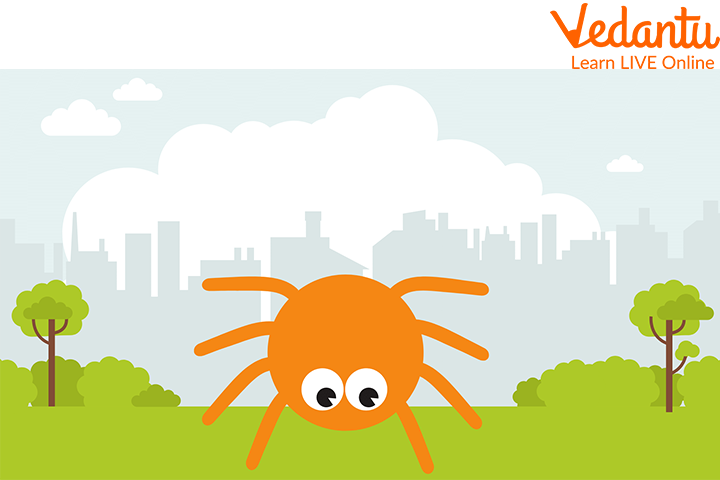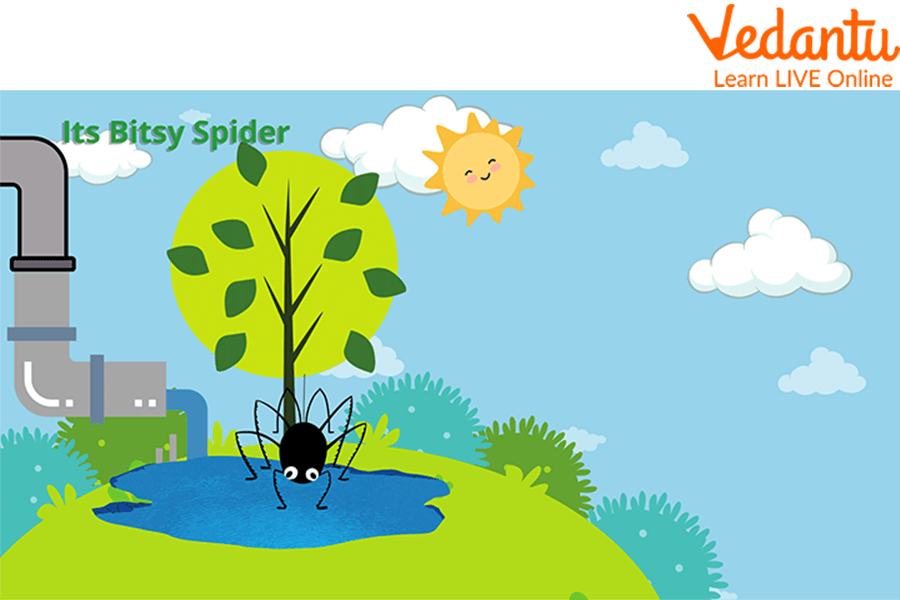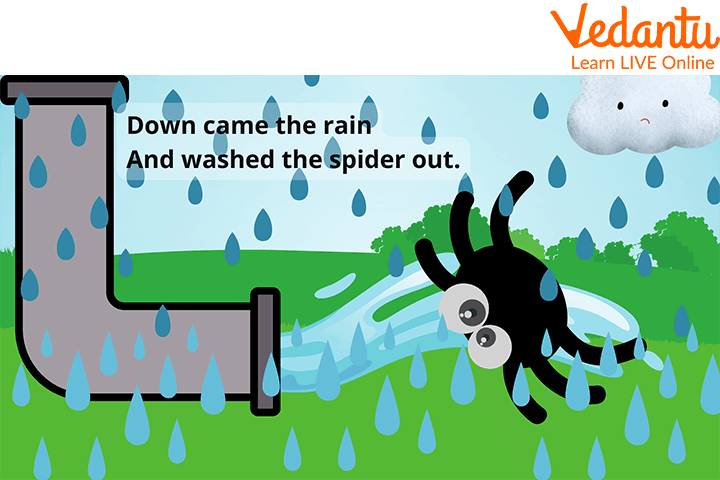Introduction
Currently, the Itsy Bitsy Spider nursery rhyme is a well-known rhyme. Its history is intriguing and hazy, and it has been translated into many other languages and has alternative lyrics. The finger motions that accompany each phrase of the song have helped it gain a lot of popularity.
It concerns a tiny spider that musters up the courage to climb a pipe but is forcibly forced down, but climbs again and keeps going in hope that he will reach the top. Now, let’s sing the spider song.

The Itsy Bitsy Spider
The Theme of the Poem
The Poet has based the theme on not only being jovial in singing but also on educational and learning aspects. The poet stresses using the Itsy-Bitsy Spider nursery rhyme to help kids learn phonological awareness abilities, especially rhymes and repetition.
Itsy Bitsy Spider - Lyrics
Itsy bitsy spider
Climbed up the waterspout;
Down came the rain
And washed the spider out;
Out came the sun
And dried up all the rain;
And the itsy bitsy spider
Climbed up the spout again
The itsy bitsy spider
Climbed up the kitchen wall
Swoosh! went the fan
And made the spider fall
Off went the fan
No longer did it blow
So the itsy bitsy spider
Back up the wall did go
The itsy bitsy spider
Climbed up the yellow pail
In came a mouse
And flicked her with his tail
Down fell the spider
The mouse ran out the door
Then the itsy bitsy spider
Climbed up the pail once more
The itsy bitsy spider
Climbed up the rocking chair
Up jumped a cat
And knocked her in the air
Down plopped the cat
And when he was asleep
The itsy bitsy spider
Back up the chair did creep
The itsy bitsy spider
Climbed up the maple tree
She slipped on some dew
And landed next to me
Out came the sun
And when the tree was dry
The itsy bitsy spider
Gave it one more try
The itsy bitsy spider
Climbed up without a stop
She spun a silky web
Right at the very top
She wove and she spun
And when her web was done
The itsy bitsy spider
Rested in the sun

Itsy Bitsy Spider in the Water Poodle
Meaning of the Poem
This poem was first published publicly in the 1900s. This poem is written with a very structured rhyme scene. The poem follows a pattern of AABACBB. Repetition is also used in the poem. The poet is saying through the poem that the spider is trying to climb up the waterspout but it slipped because of the rain. Then the rain stopped and the sun started shining and the spider climbed up the spout again.
In the second stanza,

Spider Gets Out the Pipe
Summary
The narrator focuses on this spider whose journey of climbing the water faucet is being read about. The spider first gets removed by the rain. The rain after getting dried by the Sun has the spider then return and begin to climb the spout once more. This is what keeps happening and the poor little spider tries his best each time to keep climbing. The song "The Itsy Bitsy Spider" is repeated and sung aloud while using hand motions for kids to understand the actions. We hope you enjoyed this fun poem.


FAQs on Itsy Bitsy Spider - Nursery Rhyme
1. Who is the author of the Itsy Bitsy Spider?
Iza Trapani is the best-selling author and artist of numerous children's books, including Rufus and Friends: Rhyme Time, I'm a little Teapot, and Twinkle Twinkle Little Star. She lives in the Hudson Valley of New York.
2. What does this poem teach?
This poem teaches the kids to not give up and keep going on their journey of achieving their goals and aims. The spider also does not lose hope and after numerous failures also keeps trying to get to the water faucet. Inculcating the mentality of failing and trying again is very important and this poem very well focuses on that.
3. Which rhyming pattern followed in Itsy Bitsy Spider?
Itsy Bitsy Spider follows a well-organised rhyme pattern, much as most nursery rhymes do. The lines are sequenced in an ABACBB pattern. The short song's six lyrics are connected by a recurring "B" sound, which also serves as a unifying theme.





